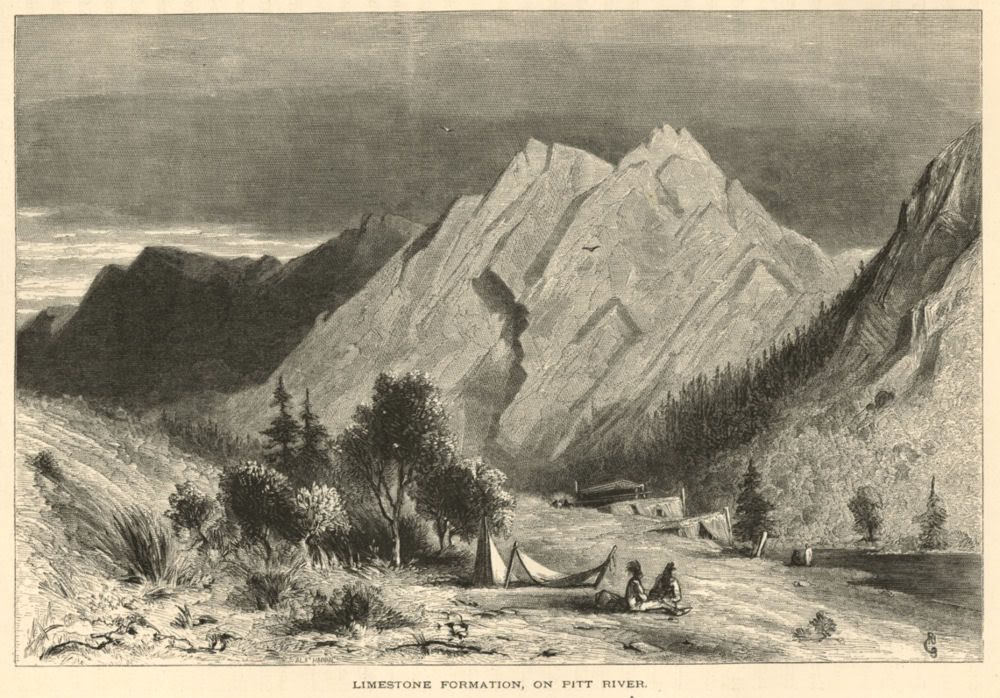Pit River Native Indigenous Languages
There are eleven autonomous bands (or small tribes, or groups) in the Pit River Nation. Big Bend is the territory of the Madesi band, the most downriver of the eleven Pit River bands. Nine of the eleven groups spoke various dialects of one main language. These nine bands can be called the “Is Awi” (Shell People) but have been mistakenly called the “Achomawi” in most of the anthropological literature. In their culture/language there was no collective word for the nine bands, but they spoke of themselves simply as the “is,” (pronounced “ees” or “eesh”), meaning “people.” In the Pit River language, “Achoma” means “river,” and generally designated what is now called the Pit River. The suffix “wi” (pronounced “wee”) apparently denotes “people,” or “people of…” So, “Achomawi” (the name of one of the nine bands) translates as “People of the River,” or “River People.” This may partly explain why early anthropologists and linguists overgeneralized and used “Achomawi” to refer to all Pit River Indians and to their common language.
This 1872 wood-cut engraving by artist R. Swain Gifford shows a glimpse of what a Madesi camp looked like along river Achoma (also called Pit River).
One of the common bonds of the nine autonomous bands was their language, which was particularly significant, given there were over 300 native languages spoken in California. Each Pit River band spoke a variation or dialect of their common language (sometimes simply called “Pit River ”), but all the dialects were mutually intelligible. There was no unified political organization, and certain groups were even traditional enemies. Their were two distinct groups however, divided culturally as the “upriver” bands and the “downriver” bands. The upriver Pit River bands had a culture similar to other tribes to the North and East, such as the Paiute, and the culture of the downriver bands was similar to neighboring tribes to the South and West, or the acorn-consuming tribes, such as the Wintun and the Yana. Big Bend is the territory of the Madesi band, the most downriver of the eleven Pit River bands. Here are some of the words they used:
Some Pit River Is Awi Madesi Place Names:
Bald Peak (BB)- Mah-how-mah-day Ah-ko
Main Village in Big Bend- Mades or Mah-dess
Big Bend Hot Springs- Lah-lah-pis-mah
BB Madesi village on SE side of Chalk Mt. S side of Pit- Do’lmaahisti
BB Madesi village on SE side of Chalk Mt. S side of Pit- Dimali’mchaboi
BB Madesi village on SE side of Chalk Mt. N side of Pit- Kla’sika
BB Madesi village on SE side of Chalk Mt. N side of Pit- Djedjepa’loi
BB Madesi village on S side of Chalk Mt. N side of Pit- Djesima’de
BB Madesi village on S side of Chalk Mt. N side of Pit- Dulipwade’
BB Madesi village across from Henderson’s N side of Pit- Lacha’sti
BB Madesi village across from Tunnel Res N side of Pit- Sustada’me
BB Madesi village across from Cottage Ln. N side of Pit- Alo’wachiwachi
BB Madesi village at Big Bend Hot Springs S side of Pit- Lah-lah-pis’mah
BB Madesi village across from BBHS N side of Pit- Mah-dess Atjwam
BB Madesi village above Big Bend Hot Springs- Al-loo-satch-hay
BB Madesi village by Pit-Kosk confluence S side of Pit- O0-le-moo-me
BB Madesi village around Pit Stop Store & Trailer Park- Tah-sah
BB Madesi village below Pit 5 power house N side of Pit- P’asiloma
Big Springs- ‘itcutc’uhtci’
Chalk Mountain- Too-le-pah-ah-te ah-ko
Fender’s Flat- Wa’wa ‘atwam (big flat)
Glass Mountain- Sa’ti’t
Grizzly Peak- Ah-ko Lah-chah’-ke
Huckleberry Valley- ‘alikhatshe’ (trout in the water)
Hunt Hot Spring- Sutti tcaw’a (a little spring place)
BB Madesi village near Hunt Hot Spring- Wacu’p’di
Kosk Creek- ‘Anutcitci ‘alussa or Anochi’chiwachi
Kosk Creek Flat (West side) large flat above Hunt HS (now pastures)- Lathew tiq’ahte (sucker fish ground)
McCloud River- ‘Ith ‘atcumma (Mt. Shasta River)
McKenzie Mtn- haduq’elade
Medicine Lake- Sat
Mount Shasta- ‘ith ‘aq’o or Yet
Mud Creek- ‘awmi ‘alussa (mud creek)
Nelson Creek- Alu’sazu’sa
Round Mountain- Masep’ut or Pasep’ut
Squaw Valley Creek- Thusi ‘alussa (good creek)
Squaw Creek- Tc’iywit or ‘Is ‘amihthewtcan ‘u’alusa
Some Pit River Is Awi Words:
Numbers
1 Ham-mis
2 Hahk’
3 Chas’-te
4 Hah-tah’-mah
5 Lah’-too
6 Mus-oo’-itch
10 Mah-lo’-se
Colors:
white – tiwici
yellow – mak-maki
red – tax-taxi
black – hoo-kici
Body Parts:
head lah
forehead ool’
eye ah’-sah
nose- yah-me
ear- e-saht’
throat- hal-lok
mouth- ahp’
lips- poo’-lip
tongue- ip-le’
neck- wahp’-te
knee- kaw-hwi
arm- lah-pow’
hand- el
nails- al-le-tsah’
belly- pin-nok’
chest- ko-kos
breasts- e-chit
feet- che’-koi
skin- e’-moo
hair- te’-ye
teeth- e-chah’
bone- al-lah’-te
tendon- pim’
brain- hem-mal’
heart- hah-dah’-che
liver- oo-way’
arm – lappaw or pamje
ear – isat
eye – us
finger – tuji
hair – malipa
hand – il or ilh
mouth – ap
nose – yamui
Vocabulary:
animal – mahok
bear- wah
bee flat – tc’iyya ‘atwam (also “valley”)
buckeye- p’asiloma
coyote- jaymul
creek – alusa
deer- towsi
dog- cahomaka
eagle- hemala
edge- anuto
elk – pau
father – nay-chah
guardian spirit – tinhowi
hot spring –
I – it
man – Yal’-le-yu
moon – col
mountain – aqo or ahko
mountain lion – dacala
north – tohoja tuki tantan
owl – chemahala
people – is or ish (rhymes with geese)
pipe- skot (rhymes with oat)
raccoon – jah’waj
raven – skaka
river (generally the Pit) – Achoma or Adzuma or Aj’umma’
flowing river – wàdzùm·à
river people – Achomawi or ‘àdzùmà·wi’
sand- tas
sandy- tasama
Shasta Group of Indians – Sasti’dji or Sha’stichu
skunk- hayana, wawa utaluk
somebody – isiana
spring –
sucker- lathe
sun – col
sunflower sp. – tammewyalo
tobacco – oop (or op, rhymes with dope)
under – ithe
valley – atwam (also “flat”)
water – as
wolf- cimmu
woman – Ah’-me-tay-o-chan
old woman – we-ah-chah’-loo
yellow jacket- jeyu
yellow pine- asu’ismilo
you – me’

